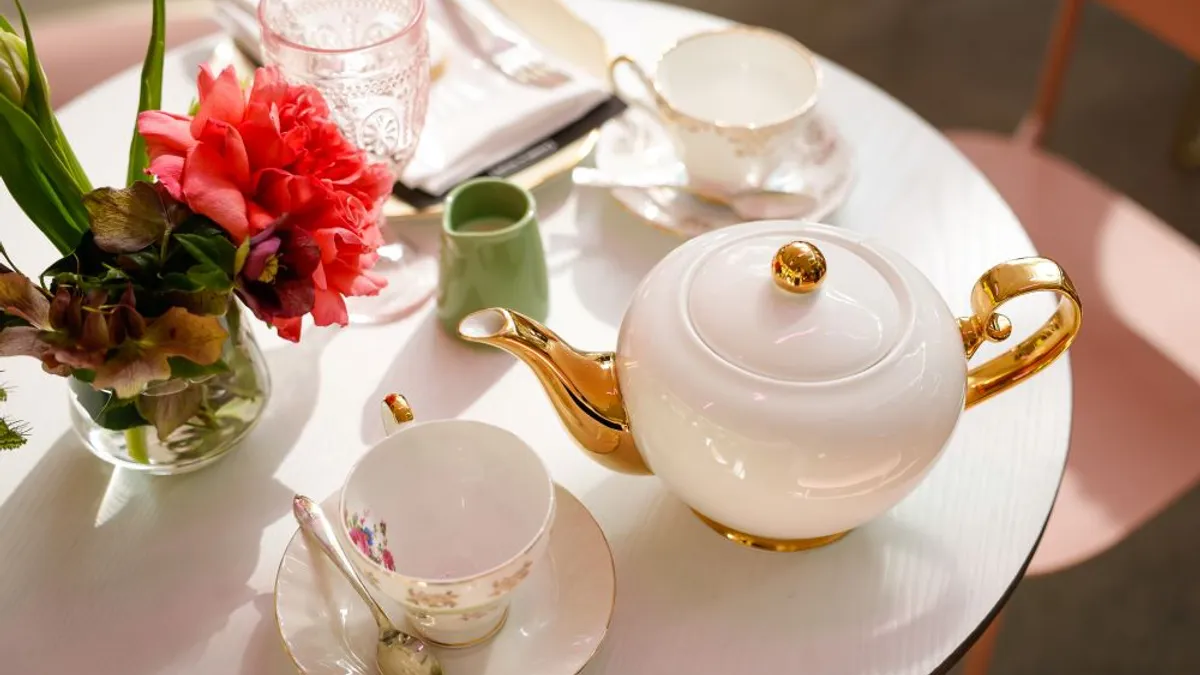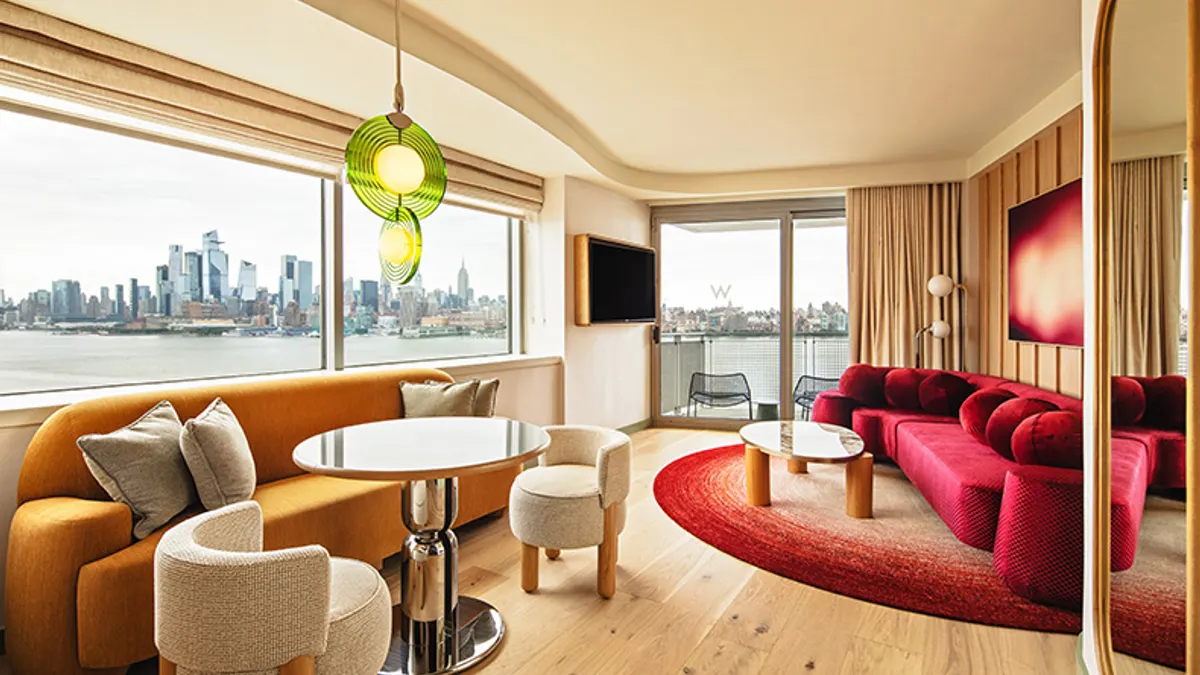In 2024, the luxury hotel segment saw “insatiable” demand from travelers who craved standout experiences and quality design. They grew hungry for unique food and beverage offerings, too.
To cater to this demand, hotel brands explored ways to enhance their bars, shared out-of-the-ordinary culinary offerings through storytelling and used local ingredients to immerse guests in their destinations.
As traveler demographics and behavior evolve in 2025, though, hotels will need to adapt their food and beverage offerings to align with guest appetites. How will they do so? Marriott International Vice President of Culinary, Global Operations Stephen Toevs shared with Hotel Dive the top trends that will shape the food and beverage scene at hotels in 2025.
Experiences turn multisensory
As consumers look to “tap into emotional connections that will fully transport them to a distant locale or a specific mood,” experiences will become multisensory in 2025, according to Toevs.
Luxury dining experiences will blend taste, sight, sound and scent to provide “unforgettable moments for travelers” this year, he told Hotel Dive.
Culinary professionals could create a multisensory experience by incorporating tailored soundscapes or curated scents, Toevs noted. Additionally, hotel venues might add ambient lighting that evolves with each course of a meal for group events, like meetings.
“High-end venues are embracing multisensory design, making each visit feel bespoke and personalized,” he said. “[Guests] want full immersion.”
Both Marriott and IHG Hotels & Resorts incorporated multisensory amenities across their respective luxury and lifestyle portfolios in 2024 to cater to travelers seeking unique wellness offerings. Now, Toevs predicts, those types of experiences will move into culinary spaces.
F&B connects generations
Culinary pros will also look to create experiences and dining offerings that connect generations, Toevs noted, as multigenerational travel ramps up in 2025.
Toevs predicts that chefs will lean into the trend of “newstalgia,” or “making everything old, new again,” he explained. Chefs will give modern twists to classic dishes and reimagine comfort food from the past with contemporary ingredients and presentation, he said.
"Trends can come and go pretty quickly, but chefs are using them to their advantage to put items on the menu and menu test, and also build their brand."

Stephen Toevs
Marriott International Vice President of Culinary, Global Operations
One example of this is what Toevs calls “tipsy tea,” a unique twist on traditional high tea. At The Gwen, a Luxury Collection Hotel, along Chicago’s Michigan Avenue, the tea service includes a live DJ and boozy drinks.
High tea is “something old that was a tradition passed down generations — grandmothers would take their granddaughters, mothers would take their daughters. Now, people are looking at a tea experience in the afternoon as a respite from their day,” Toevs said.
Chefs will reimagine this traditional service to cater to younger generations and an increased demand for experience-based offerings in 2025. They will stray from the old-school “three-tiered stand with scones, macaroons and tea sandwiches,” and instead may incorporate a large-format dessert option or mix up how the courses are served, Toevs noted.
Another example of how hotel restaurants are leaning into “newstalgia” this year is happening at Gaylord Rockies Resort & Convention Center’s Old Hickory Steakhouse, where chefs are adding new flare to the classic baked potato with ingredients like pork belly lardon, caviar and black truffle, Toevs noted.
When chefs create twists on classic dishes, the meal or experience becomes a talking point among generations and “bonds families together and creates memories,” according to Toevs.
Driving the “newstalgia” trend, in part, is social media, where chefs are “seeing content creators come up with different plays on nostalgic foods,” Toevs said.
Social media influences menus
Social media will inform menu creation this year, as chefs pull inspiration from social posts to be trendy and relevant, Toevs shared.
“Trends can come and go pretty quickly, but chefs are using them to their advantage to put items on the menu and menu test, and also build their brand,” Toevs said.
“Chefs are an extension of our [hotel] brands,” he continued. “They can post to their social media and their followers will see and [think], ‘Oh, wow. Chef Stephen is working at this hotel, and he’s doing some pretty amazing things. That looks really delicious. I need to go get a cocktail there and have that particular crispy chicken sandwich at the bar.’”
On the flip side, chefs will also look to create unique menu items or experiences to increase their property’s shareability on social media.
When a guest has a special menu item or immersive experience, Toevs said, “they want to pull out their phone — they want to capture that moment.” And once they capture the moment, they are more likely to share it.
Toevs said “tipsy tea” services, in particular, have already become “extremely popular to share on social media.”
Social media has enabled tripgoers worldwide to discover new destinations and hotels, hospitality pros shared with Hotel Dive last year.
Clarification: This story was updated with details about how hotel venues could utilize ambient lighting.

















